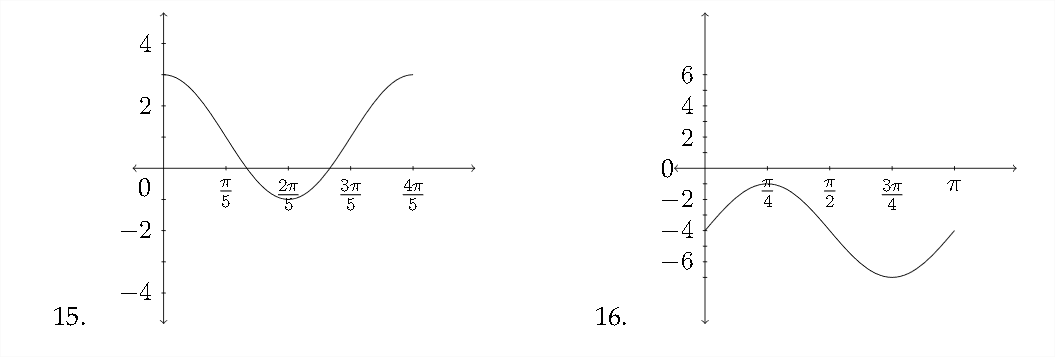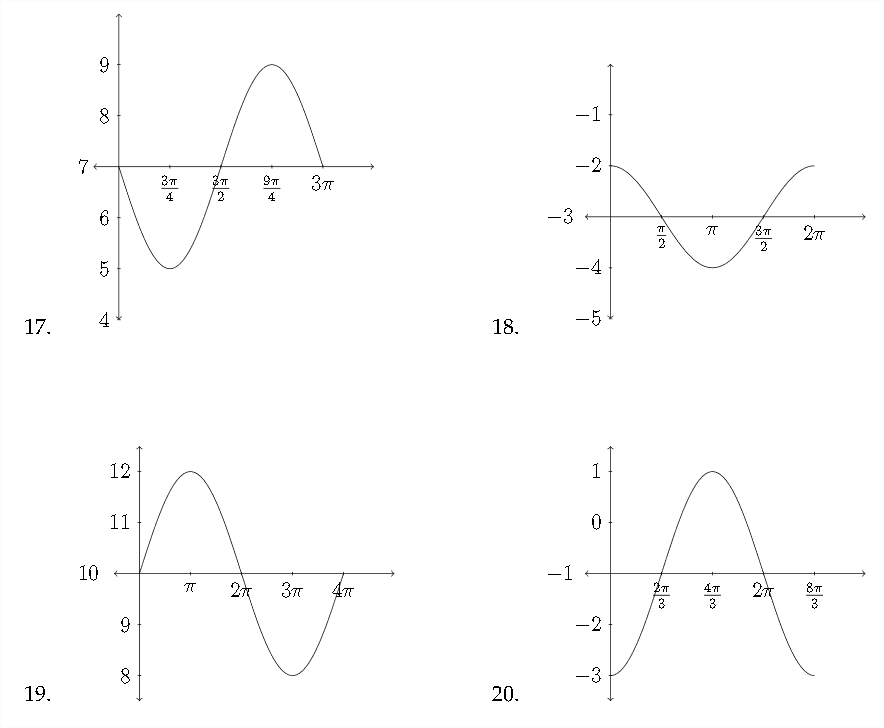If a constant is added or subtracted to a trigonometric function, this will affect the \(y\) -values of the function If we consider the function \(y-5+\sin x,\) then each of the standard \(y\) -values would have 5 added to if, which would shift the graph up 5 units.
The chart below considers just the quadrantal values for the sine function:
\begin{tabular}{|c|c|c|}
\hline\(\theta\) & \(\sin \theta\) & \(5+\sin \theta\) \\
\hline 0 & 0 & 5 \\
\hline\(\pi / 2\) & 1 & 6 \\
\hline\(\pi\) & 0 & 5 \\
\hline \(3 \pi / 2\) & -1 & 4 \\
\hline \(2 \pi\) & 0 & 5 \\
\hline
\end{tabular}
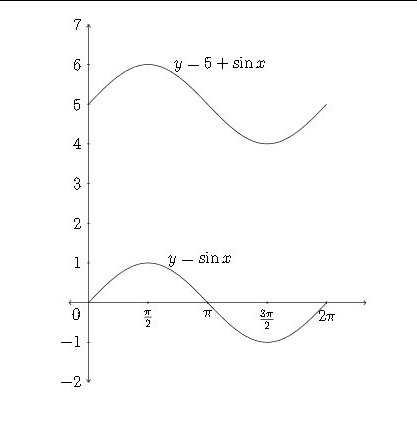
Sometimes the \(x\) -axis is drawn through the line that is the new "zero" or "midline" for the function - in this case it would be \(y-5\)
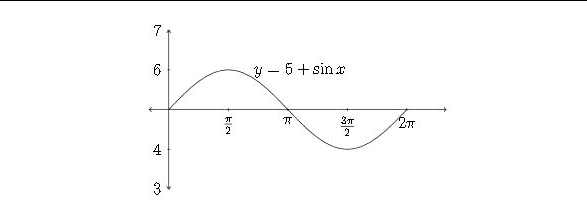
Likewrise, a negative constant would move the graph down, as each y-value would be less than the corresponding \(y\) -value in the standard sine function
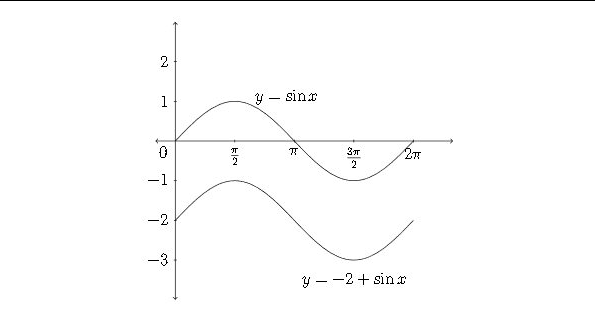
In the previous examples the constant has been written in front of the sine function for clarity. Often the constant is written after the function:
\[
\begin{array}{c}
y-\sin x+5 \\
\mathrm{or} \\
y-\sin x-2
\end{array}
\]
We have now examined three of the four transformations of trigonometric functions that are discussed in this chapter - amplitude, period and vertical shift. A general equation for a sinusoid that involves these three transformations would be:
\[
y=A \sin (B x)+D
\]
Or
\[
y=A \cos (B x)+D
\]
In determining an equation from a graph that involves a vertical shift, the value of \(A\) will be half the distance between the maximum and minimum values:
\[
A=\frac{m a x-m i n}{2}
\]
and the value of \(D\) will be the average of the maximum and minimum values:
\[
D=\frac{m a x+m i n}{2}
\]
Example
Determine an equation that satisfies the given graph.
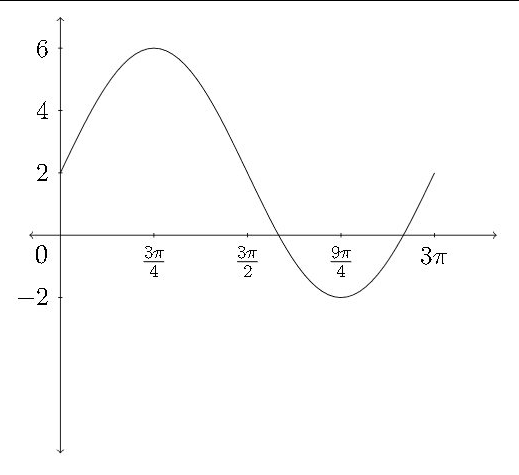
In this graph, the maximum \(y\) -value is 6 and the minimum \(y\) -value is \(-2 .\) The average of these two:
\[
\frac{m a x+m i n}{2}=\frac{6+(-2)}{2}=\frac{4}{2}=2=D
\]
is the value of \(D,\) the vertical shift.
The distance between 6 and -2 is \(6-(-2)=8 .\) Half the distance between the \(\max\) and \(\min\) is \(4,\) which is the value of \(A\)
\[
\frac{m a x-m i n}{2}=\frac{6-(-2)}{2}=\frac{8}{2}=4=A
\]
The graph completes one full cycle between 0 and \(3 \pi,\) so the period would be \(3 \pi\) and the value of \(B\) would be \(B=\frac{2 \pi}{P}=\frac{2 \pi}{3 \pi}=\frac{2}{3}=B .\) So a correct equation for the graph would be:
\[
y=4 \sin \frac{2}{3} x+2
\]
Exercises 2.3
Determine the Amplitude, Period and Vertical Shift for each function below and graph one period of the function. Identify the important points on the \(x\) and \(y\) axes.
1. \(\quad y=\sin x+1\)
2. \(\quad y=\cos x-1\)
3. \(\quad y=2 \cos x-\frac{1}{2}\)
4. \(\quad y=5 \sin x+4\)
5. \(\quad y=-\sin \left(\frac{1}{4} x\right)+1\)
6. \(\quad y=-\cos (2 x)+7\)
7. \(\quad y=\frac{1}{3} \sin (\pi x)-4\)
8. \(\quad y=-\frac{1}{2} \cos (2 \pi x)+2\)
9. \(\quad y=5 \cos \left(\frac{1}{2} x\right)+1\)
\(10 . \quad y=4 \sin \left(\frac{1}{3} x\right)-1\)
11. \(\quad y=3 \cos x+2\)
12. \(\quad y=2 \sin x+3\)
13. \(\quad y=2-4 \cos (3 x)\)
14. \(\quad y=5-3 \sin (2 x)\)
Determine an equation that satisfies the given graph.
